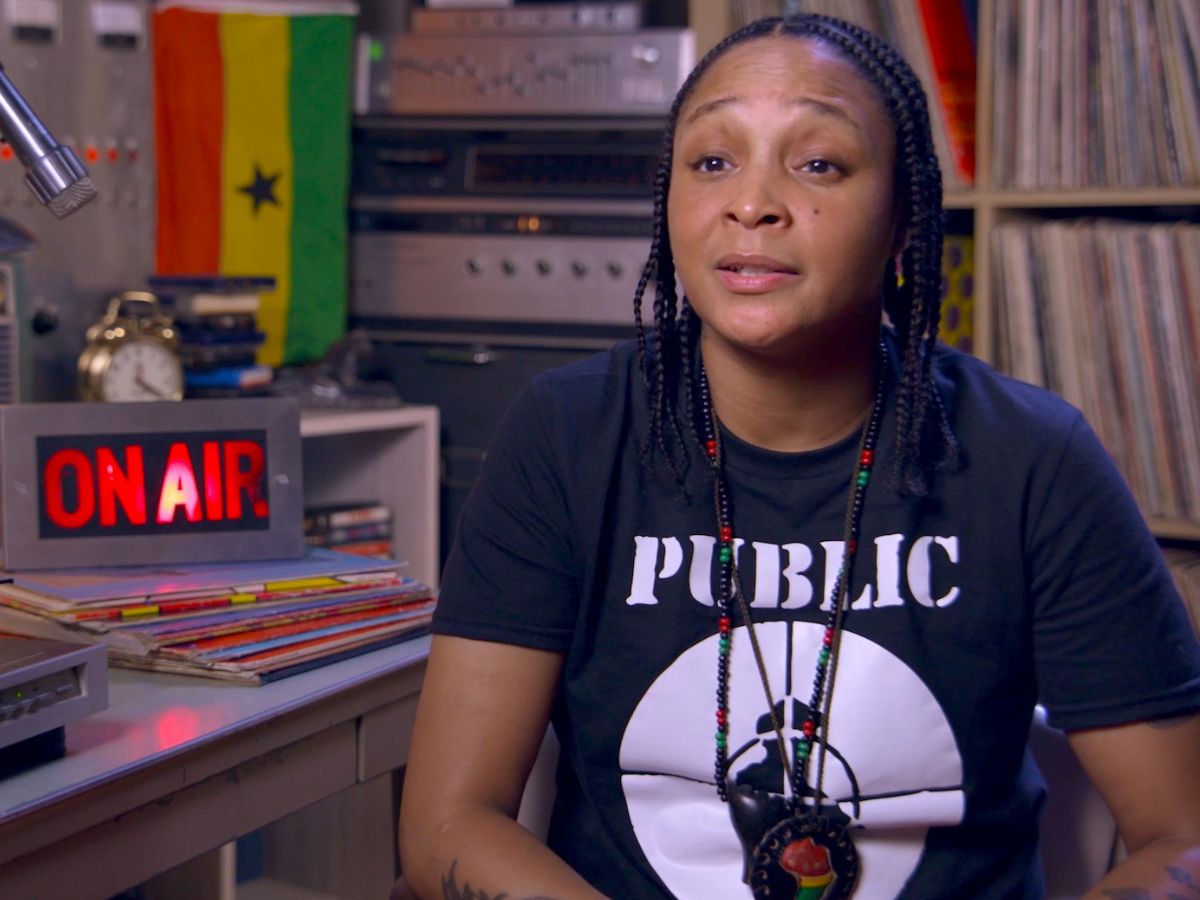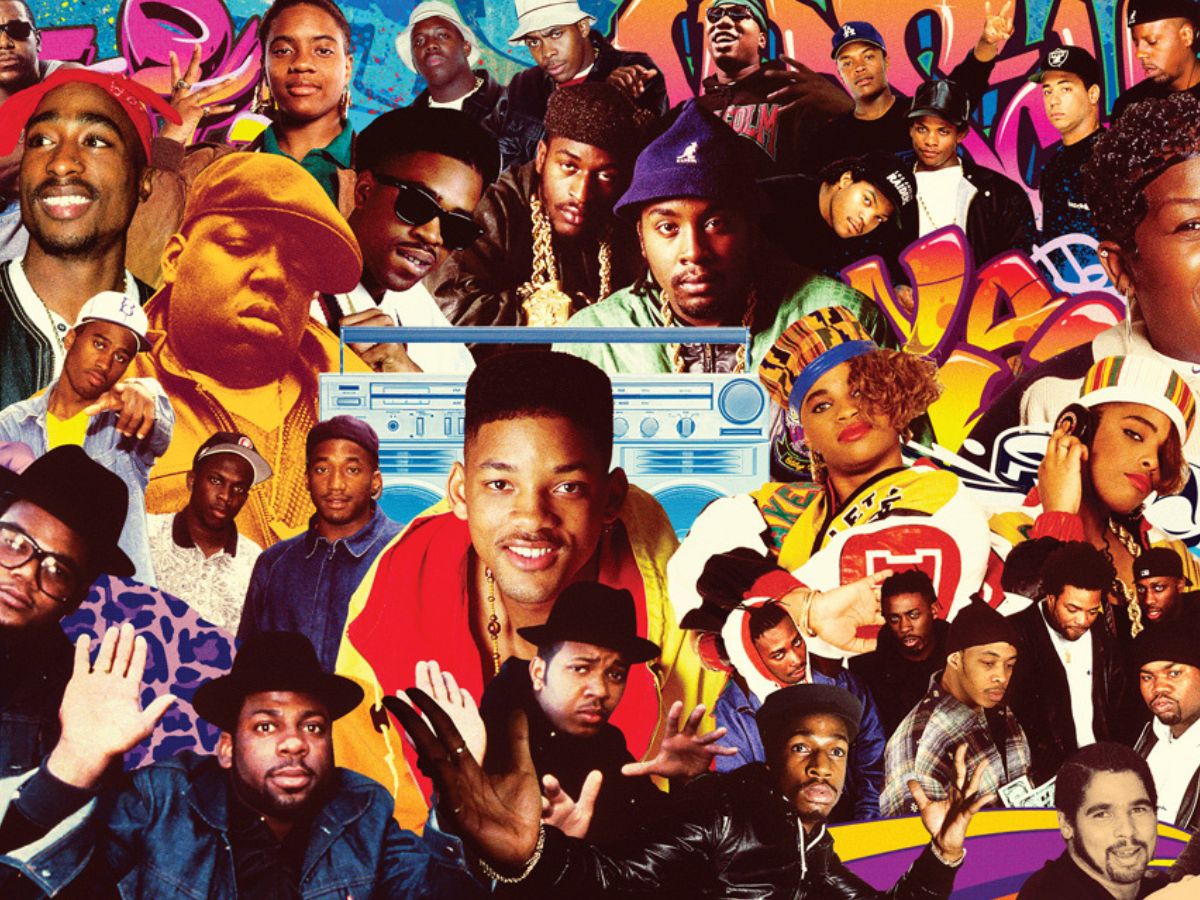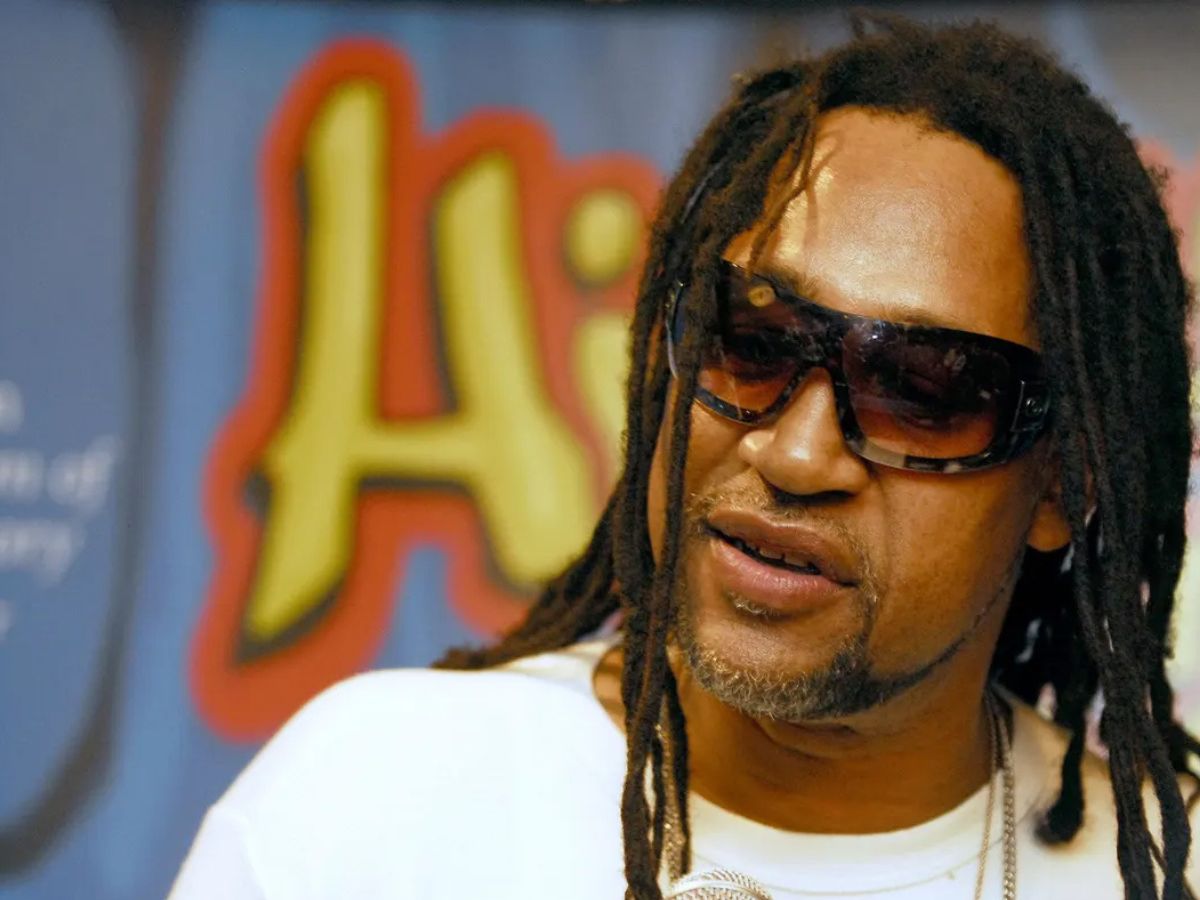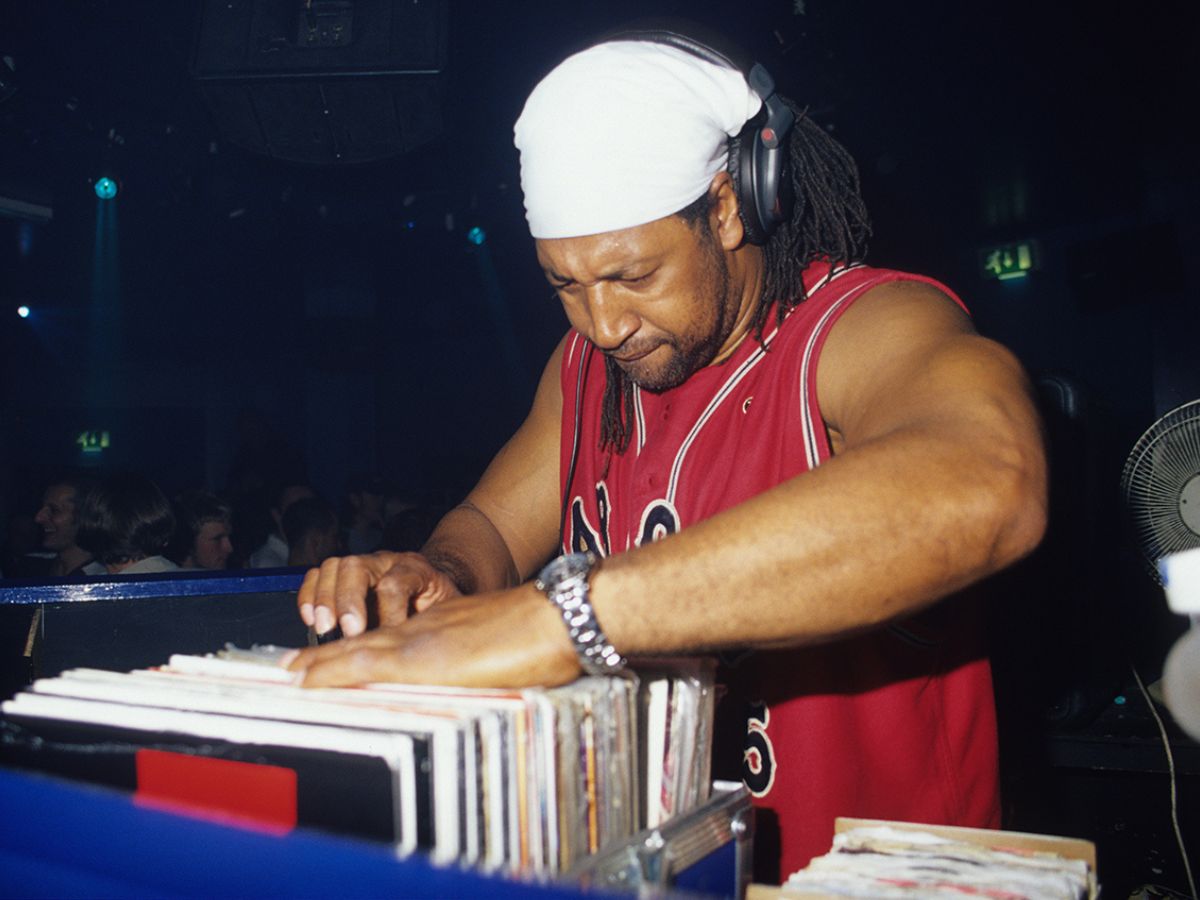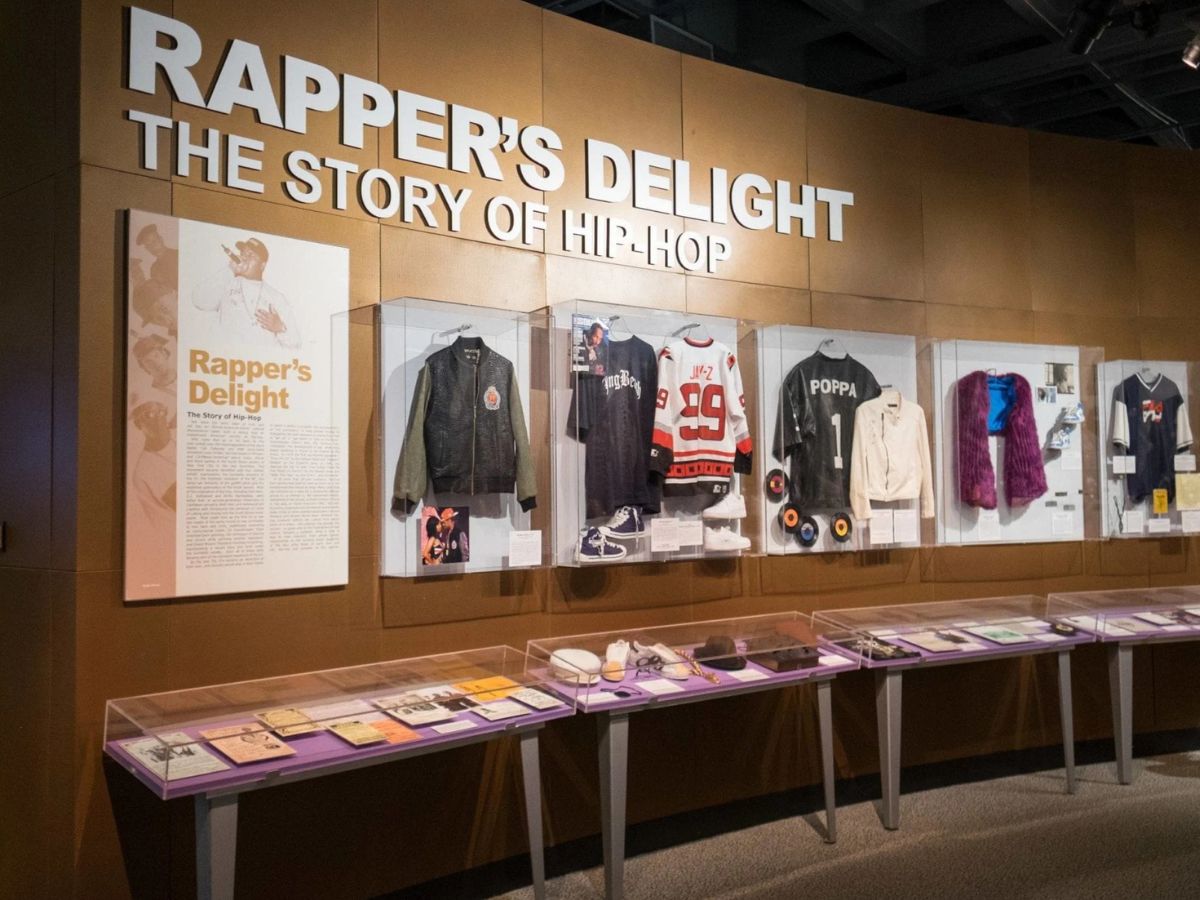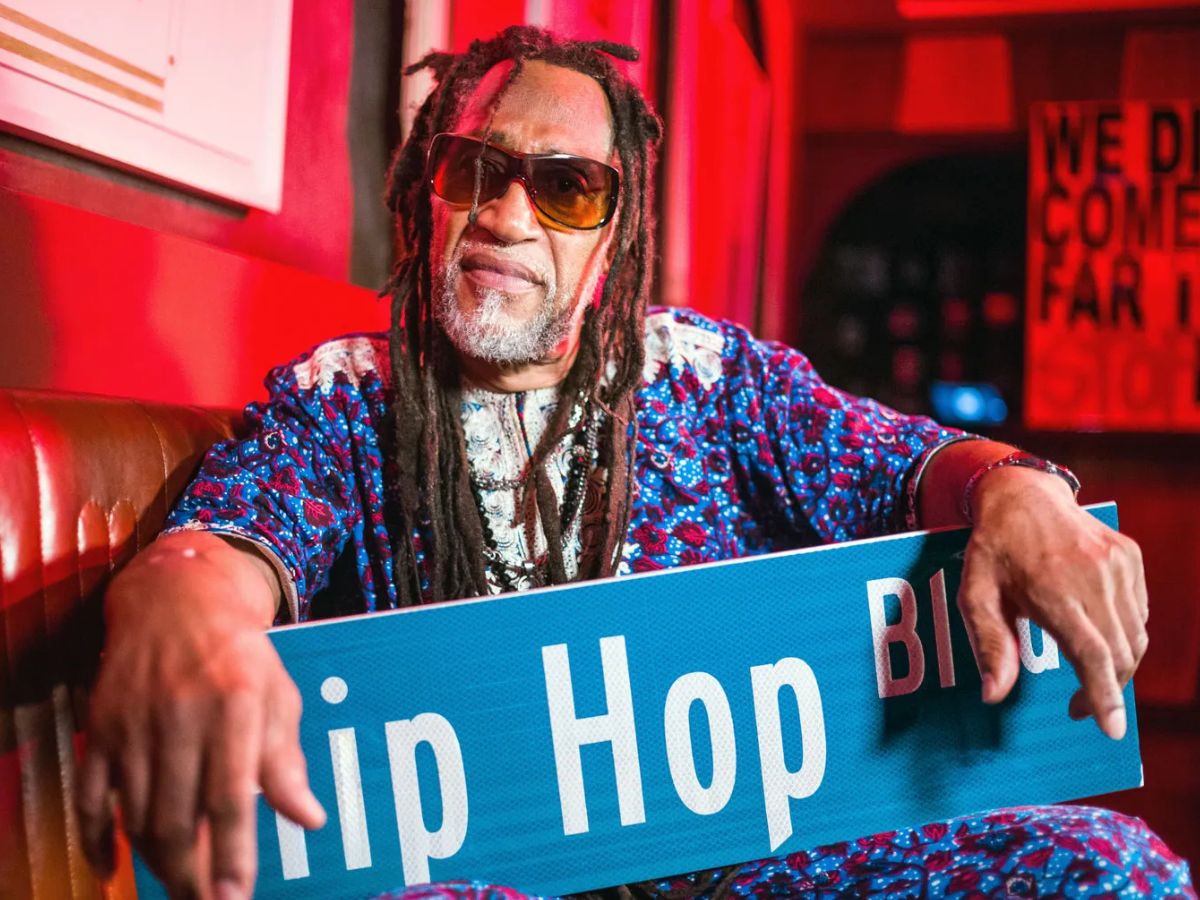

Hip Hop
Who Is The First Hip Hop Artist
Modified: January 25, 2024
Discover the origin of hip hop and explore the groundbreaking work of the first hip hop artist. Uncover the roots of this influential genre and its impact on music and culture.
(Many of the links in this article redirect to a specific reviewed product. Your purchase of these products through affiliate links helps to generate commission for AudioLover.com, at no extra cost. Learn more)
Table of Contents
- Introduction
- Early Pioneers of Hip Hop
- DJ Kool Herc: The Founding Father of Hip Hop
- Grandmaster Flash and the Furious Five: Innovators of Hip Hop
- Afrika Bambaataa: The Godfather of Hip Hop
- Sugarhill Gang: The First Hip Hop Group to Achieve Commercial Success
- Kurtis Blow: The First Solo Hip Hop Artist to Sign with a Major Record Label
- Conclusion
Introduction
Hip hop has become one of the most influential and globally recognized music genres in the world. From its humble beginnings in the Bronx, New York, in the 1970s, it has evolved into a cultural movement that encompasses music, dance, fashion, and art. Although it is now a multi-billion dollar industry, it all started with a group of innovative individuals who laid the foundation for what would become a global phenomenon.
In this article, we will explore the early pioneers of hip hop, focusing on the first hip hop artist and their contributions to the genre. These trailblazers not only shaped the music but also paved the way for future artists to emerge and express themselves through this unique form of artistic expression.
It is important to note that pinpointing the absolute first hip hop artist can be challenging, as hip hop was primarily an oral tradition in its early days. However, there are several figures who played pivotal roles in the development of the genre and can be considered some of the earliest hip hop artists.
Early Pioneers of Hip Hop
Hip hop emerged as a cultural movement in the late 1970s, originating in the South Bronx, New York City. It was a response to the social and economic challenges faced by marginalized communities, serving as a form of creative expression and empowerment for the youth of the time.
During this period, various elements of hip hop began taking shape, including DJing, breakdancing, graffiti art, and MCing (rapping). These early pioneers laid the foundation for what would become a global phenomenon, shaping the sound, style, and culture of hip hop as we know it today.
One of the key elements of hip hop is DJing, which involves manipulating and mixing records to create unique beats and sounds. DJs like Kool Herc, Grandmaster Flash, and Afrika Bambaataa were instrumental in developing the DJing techniques that would become a fundamental part of hip hop music. They were masters at creating seamless blends and incorporating breakbeats, which are short drum solos from funk and soul records, into their mixes.
Another vital aspect of hip hop is MCing, also known as rapping. MCs would use their lyrical skills to entertain crowds and tell stories over the beats provided by the DJs. Early rappers such as Coke La Rock and Grandmaster Caz were the precursors to the modern-day emcees, paving the way for the explosive growth of rap music in the coming decades.
Aside from DJing and MCing, breakdancing and graffiti art played integral roles in the development of hip hop culture. Breakdancing, also known as b-boying or breaking, emerged as a form of dance that incorporated acrobatic moves and intricate footwork. Graffiti art, on the other hand, provided a visual representation of hip hop culture, with artists using vibrant colors and intricate designs to showcase their talent on walls and subway trains.
Together, these early pioneers of hip hop laid the groundwork for a cultural movement that would transcend boundaries and connect people from all walks of life. Their influence can still be felt in the music, fashion, and art of today’s hip hop landscape.
DJ Kool Herc: The Founding Father of Hip Hop
When discussing the origins of hip hop, it is impossible to overlook the immense influence of DJ Kool Herc. Born Clive Campbell in Kingston, Jamaica, Herc moved to the Bronx, New York, in the late 1960s. It was in the Bronx that he would become a pivotal figure in the development of hip hop.
Herc’s innovative DJing techniques set the foundation for what would become the hallmark sound of hip hop. He is credited with popularizing the “breakbeat,” the rhythmic section of a song where the drums and percussion take center stage. Herc would extend these breakbeats using two turntables and a mixer, creating an endless loop of funky beats that would keep the crowd energized and dancing.
One of Herc’s signature party techniques was the “Merry-Go-Round,” where he would play the same breakbeat continuously, extending it for several minutes. This technique gave the b-boys and b-girls ample time to showcase their breakdancing skills, creating an electrifying atmosphere at his parties.
Not only a skilled DJ, Herc was also a charismatic and influential figure in the Bronx community. His legendary parties, known as “Hercules’ Home Parties,” brought people together from all walks of life and helped to break down social barriers. These events became the birthplace of hip hop culture, where DJing, MCing, breakdancing, and graffiti art converged.
DJ Kool Herc’s impact on hip hop cannot be overstated. His innovative DJ techniques set the stage for future DJs and producers, shaping the sound and style of hip hop music. His parties laid the foundation for the cultural movement that would go on to dominate the music industry.
Today, DJ Kool Herc is rightfully recognized as the founding father of hip hop. His contributions to the genre continue to inspire new generations of artists, reminding us of the power of innovation and creativity in shaping the course of music history.
Grandmaster Flash and the Furious Five: Innovators of Hip Hop
When it comes to influential hip hop groups, Grandmaster Flash and the Furious Five undoubtedly make their mark. Formed in the South Bronx in the late 1970s, the group consisted of DJ Grandmaster Flash and MCs Melle Mel, Kidd Creole, Cowboy, Rahiem, and Scorpio. Together, they played an instrumental role in shaping the sound and lyrical style of early hip hop.
Grandmaster Flash’s contributions to DJing revolutionized the way records were manipulated and mixed. He developed groundbreaking techniques such as “backspinning” and “cutting,” where he would use his fingers to manually move the record back and forth to create rhythmic patterns and loops. These techniques allowed him to seamlessly transition between different tracks, enhancing the flow and energy of his DJ sets.
The Furious Five, led by MC Melle Mel, brought a unique lyrical style to hip hop. Their lyrics often tackled social and political issues, addressing topics such as poverty, drug addiction, and social injustice. Their seminal track “The Message” in 1982 is widely regarded as a game-changer in hip hop, as it addressed the harsh realities of inner-city life in a raw and unapologetic manner.
What made Grandmaster Flash and the Furious Five stand out was their ability to combine technical skill with socially conscious lyricism. Their music resonated with listeners, shining a light on the realities of life in urban America. They were able to capture the essence of the streets and bring it to the forefront of mainstream consciousness.
In addition to their musical achievements, Grandmaster Flash and the Furious Five became pioneers in the realm of live performances. They were known for their energetic and captivating stage presence, incorporating choreographed dance routines and crowd engagement. Their dynamic performances helped to elevate the live hip hop experience, pushing the envelope for how a hip hop act should deliver their craft.
Grandmaster Flash and the Furious Five’s innovative approach to DJing, powerful lyrical content, and groundbreaking live performances played a significant role in elevating hip hop from a local street culture to a global musical phenomenon. Their influence can still be felt in the music of today, as their pioneering spirit continues to inspire and motivate artists in the hip hop community.
Afrika Bambaataa: The Godfather of Hip Hop
No discussion of early hip hop would be complete without mentioning Afrika Bambaataa, known as the “Godfather of Hip Hop.” Born Kevin Donovan in the Bronx, New York, Bambaataa played a pivotal role in shaping the cultural landscape of hip hop and introducing it to a wider audience.
Bambaataa is credited with being one of the founding fathers of hip hop, particularly in terms of spreading its message beyond the local Bronx community. He was a visionary who saw the potential of hip hop as a tool for social empowerment and cultural unity.
One of Bambaataa’s most notable contributions was the formation of the Universal Zulu Nation, an organization that aimed to promote peace, unity, and community development through hip hop culture. The Zulu Nation provided a space for DJs, MCs, dancers, and artists to come together and share their talents, fostering a sense of collective creativity.
Bambaataa’s musical influence extended beyond his role as a DJ. He was known for his eclectic taste in music, incorporating elements of funk, soul, rock, and electronic music into his sets. This fusion of genres set the stage for the diverse soundscape of hip hop, paving the way for future artists to explore and experiment with various musical styles.
One of Bambaataa’s most iconic tracks, “Planet Rock,” released in 1982, exemplifies his innovative approach to music. The song combined elements of Kraftwerk’s electronic music with hip hop beats and features the iconic “808” drum machine. “Planet Rock” became a groundbreaking hit, solidifying Bambaataa’s status as a trailblazer in the genre.
Beyond his musical contributions, Bambaataa’s emphasis on social consciousness and cultural awareness set him apart. He used his platform to address social issues and promote activism, especially in marginalized communities. Bambaataa’s dedication to spreading love, unity, and respect became core principles of the hip hop movement.
Afrika Bambaataa’s influence on hip hop and popular culture cannot be overstated. He played a vital role in expanding the reach and influence of the genre, both musically and socially. His commitment to unity and social empowerment continues to inspire artists today, reminding us of the transformative power of hip hop as a force for positive change.
Sugarhill Gang: The First Hip Hop Group to Achieve Commercial Success
One of the most significant milestones in the history of hip hop was the rise of the Sugarhill Gang, who became the first hip hop group to achieve commercial success. Composed of Wonder Mike, Big Bank Hank, and Master Gee, the Sugarhill Gang burst onto the scene in 1979 with their iconic hit, “Rapper’s Delight.”
“Rapper’s Delight” was a game-changer for hip hop, propelling the genre into the mainstream. The song, produced by Sylvia Robinson of Sugar Hill Records, sampled the funky bassline from Chic’s “Good Times” and showcased the group’s infectious rhymes and undeniable charisma. It became an instant sensation, reaching the top 40 on the Billboard Hot 100 and cementing the Sugarhill Gang’s place in music history.
As the first hip hop group to achieve commercial success, the Sugarhill Gang paved the way for other hip hop acts to attract mainstream attention. They introduced the world to the art of rapping, demonstrating that hip hop had mass appeal beyond its origins in the Bronx streets. Their success opened doors for other artists and helped to legitimize hip hop as a viable genre in the music industry.
Aside from their groundbreaking single, the Sugarhill Gang released several other notable tracks, including “Apache” and “8th Wonder.” These songs showcased their ability to entertain audiences with their catchy hooks, clever wordplay, and energetic delivery.
While the Sugarhill Gang’s success was undeniably influential, the group faced challenges and controversy. It was later revealed that their lyrics for “Rapper’s Delight” were written by Grandmaster Caz, an influential figure in the early days of hip hop. This revelation led to discussions about the proper recognition and compensation for artists and their contributions to the genre.
Nevertheless, the lasting impact of the Sugarhill Gang on hip hop cannot be denied. They broke barriers and brought hip hop to a wider audience, opening up opportunities for future artists to share their stories and experiences through music. Their success marked a turning point for hip hop, setting the stage for the global dominance it enjoys today.
The Sugarhill Gang’s legacy lives on, reminding us of the pioneering spirit and the limitless possibilities of hip hop as a genre. They will always be remembered as the first hip hop group to achieve commercial success, forever etching their names in the annals of music history.
Kurtis Blow: The First Solo Hip Hop Artist to Sign with a Major Record Label
In the early days of hip hop, securing a record deal for an aspiring artist was a formidable challenge. However, Kurtis Blow emerged as a trailblazer, becoming the first solo hip hop artist to sign with a major record label. Born Kurtis Walker in Harlem, New York, Blow made a lasting impact on the genre with his talent, charisma, and entrepreneurial spirit.
Blow’s breakthrough came in 1979 when he released his debut single, “Christmas Rappin’,” which quickly gained attention and showcased his distinctive flow and witty lyrics. The success of the single earned him recognition and landed him a record deal with Mercury Records, marking a significant milestone for hip hop as a whole.
Following the success of “Christmas Rappin’,” Blow released his iconic track “The Breaks” in 1980. The song became a smash hit, reaching the Top 10 on the Billboard Hot 100 charts and solidifying Blow’s status as a hip hop pioneer. With its infectious rhythm and relatable lyrics, “The Breaks” remains a timeless anthem of the genre.
Kurtis Blow’s talent extended beyond being an MC. He was also an accomplished producer, songwriter, and performer. His stage presence and charismatic persona made him a revered figure in the hip hop community. Blow’s performances were captivating, with his infectious energy and crowd interaction captivating audiences around the world.
In addition to his musical contributions, Blow played a pivotal role in raising the profile and credibility of hip hop through his collaborations and industry involvement. He worked alongside influential figures such as Run-D.M.C., Russell Simmons, and Rick Rubin, who would go on to shape the course of hip hop music and culture.
Blow’s impact extended beyond his own success as a recording artist. He paved the way for future hip hop artists to sign with major record labels, proving that hip hop had commercial viability and artistic value. His achievements helped legitimize hip hop as a respected genre in the music industry, opening doors for countless aspiring artists to follow their dreams.
Today, Kurtis Blow is widely recognized as a true pioneer and trailblazer in hip hop. His contributions laid the foundation for the growth and global influence of the genre. He remains an inspiration to both established and emerging artists, reminding them of the importance of originality, passion, and perseverance in the pursuit of their musical dreams.
Conclusion
The early pioneers of hip hop laid the groundwork for a cultural movement that has since become a global phenomenon. From the innovative DJing techniques of DJ Kool Herc to the socially conscious lyrics of Grandmaster Flash and the Furious Five, each artist has made a significant contribution to the evolution of the genre.
Afrika Bambaataa’s emphasis on unity and social empowerment, along with the commercial success of the Sugarhill Gang and the trailblazing efforts of Kurtis Blow, have helped shape hip hop into what it is today. These artists not only pioneered new musical styles and techniques but also broke down barriers and challenged societal norms through their art.
Through their creativity, talent, and determination, these early pioneers transformed hip hop from a local street culture into a powerful force that transcends boundaries and resonates with people from all walks of life. They paved the way for future artists to express themselves authentically and brought the genre into the mainstream consciousness.
As the hip hop community continues to evolve and grow, it is crucial to recognize and honor the contributions of those who came before. The foundational work and unique vision of these early pioneers serve as a reminder of the richness and diversity of hip hop culture.
In conclusion, the first hip hop artists were more than just musicians; they were trailblazers who shaped a movement, fostering creativity, expression, and empowerment. Their legacy continues to inspire new generations of hip hop artists, reminding us of the power of music to transcend barriers and bring people together.
As we reflect on the roots of hip hop and the impact of these early pioneers, we must continue to celebrate their contributions and strive to carry their legacy forward. Hip hop is not just a genre of music; it is a cultural phenomenon that represents the voice of the unheard and the spirit of resilience. It is a testament to the power of individuals to create something extraordinary out of nothing, and it will undoubtedly continue to evolve and leave an indelible mark on the world for years to come.

